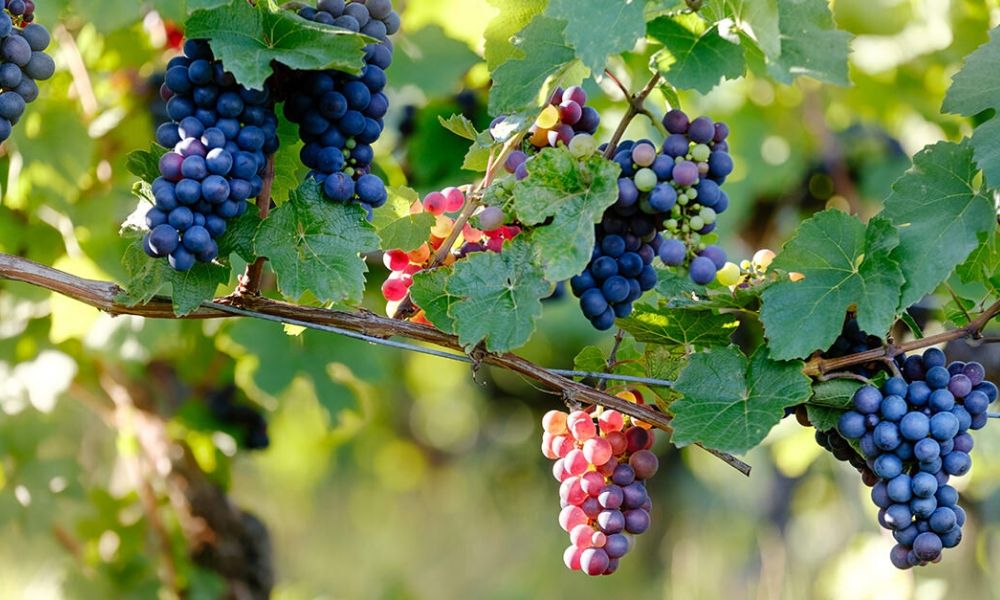Difficult, unpredictable, delicate; and at the same time fascinating and exhilarating. Pinot noir is genius and recklessness. Let's see everything there is to know about Pinot Noir, in ten points.
Pinot Noir is a difficult and grumpy grape variety, which gives elegant and complex wines. Let's see what you need to know in ten simple points about one of the best known and most complicated grapes in the world.
1. Where does pinot noir originate from?
An ancient black grape native to Burgundy , it is the progenitor of the Pinot family. At home, Pinot Noir expresses the maximum hints of elegance and versatility. The French call him “enfant terrible”. In particular, it is at its best in the premier crus of Côte de Beaune and Côte de Nuits.
2. Why is growing pinot noir difficult?
Because it does not allow for errors: it requires maximum meticulousness and scruple, in the vineyard and in the cellar.
In the vineyard : it tends to produce too much and if you harvest looking at quantity it loses expressive baggage. It is subject to mold because the bunches are very dense. It requires Guyot systems and a planting density close to six thousand plants per hectare.
In the cellar : the red vinification of Pinot Noir is a great challenge and leads to variable results from year to year, even in the most suitable areas. It is not always suitable for aging: a lot depends on the vintage and the amount of acidity. But grown in the right conditions, Pinot Noir gives wines of rare elegance. And then it doesn't tolerate barrique: if it acquires hints of wood, it struggles to get rid of them.

3. What conditions does pinot noir need to grow?
Pinot noir gives its best in ventilated, non-humid and well-exposed areas, which enjoy not excessive heat and are characterized by day-night temperature variations. Therefore it performs well if grown at medium-high altitudes: the cool climate helps to preserve its aromas.
4. What other characteristics does pinot noir have?
Pinot Noir has an extraordinary characteristic: it can admirably record the many nuances of the different terroirs , since it expresses itself differently based on the different production areas.
- Read also: how to recognize the Pinto Nero blindly
5. When does pinot noir arrive in Italy?
Very widespread internationally (it is also cultivated in Switzerland, Germany, Austria, California, South Africa, Australia, Argentina and New Zealand, for a total of approximately 112 thousand hectares - the fifth most cultivated grape in the world), at the end of the nineteenth century it reached Italy and here found some territories in which express itself at its best, thanks to the presence of favorable territorial elements in terms of climate and location. Over time it has carved out an increasingly important space for itself from a qualitative point of view: the Oltrepò Pavese and Alto Adige have led the way, but it also achieves interesting results in Trentino and in some areas of Tuscany, where it has found an expressive way personal where it clearly reflects the territorial matrix.
6. Where is Pinot Noir grown in Italy today?
Pinot noir was registered in the National Catalog as a vine variety in 1970. The surface area in Italy is approximately 5050 hectares.
In Italy, pinot noir excels in Alto Adige , Oltrepò Pavese , Franciacorta , Trentino , Valle d'Aosta and also in Soave. Much more problematic is its cultivation in the central-south, where there is little daily temperature variation. The territories on the Apennine ridge are an exception, especially Umbrian-Tuscan (in Arezzo ) and Tuscan-Emilian (in Mugello ), where the excellent climatic conditions to optimize the quality of this delicate vine are guaranteed by the relative altitude. Pinot noir is also bred on the Pesaro coast of the Marche .
7. More, about pinot noir in Tuscany
Pinot noir has been cultivated in Mugello since the early 2000s: thanks to some courageous pioneers, this research has started a real rebirth of this area.
8. What to expect in a glass of Pinot Noir?
In a glass of Pinot Noir vinified in red, the color tends to pale ruby red with garnet reflections. Intense aromas of red fruits are to be expected; above all: currants, blackberries and raspberries. Not very tannic, if young it expresses more floral bouquets, while if aged notes of leather, tobacco and spices emerge.
Pinot Noir can be vinified off-white to create sparkling wines with the Classic Method, especially in blending with Chardonnay, to which it gives body, complexity and longevity.
9. What food does Pinot Noir pair with?
There are many possibilities for pairing Pinot Noir - we propose three here.
Vegetarian pairing : try it with dishes characterized by the flavors of the forest, such as dishes with blueberries, juniper, mushrooms, Jerusalem artichokes, truffles...
Pairing with meat dishes : perfect with delicate meats, including pork and chicken.
International pairing : to be tried in combination with foods with complex but not excessive spiciness as happens for example in Indian cuisine.
10. The most expensive Pinot Noir ever?
The Romanée-Conti Grand Cru : approximately 11,000 euros per bottle, the most expensive wine in the world, obtained from a 1.81 hectare vineyard, for a total of 5,500 bottles per year.





